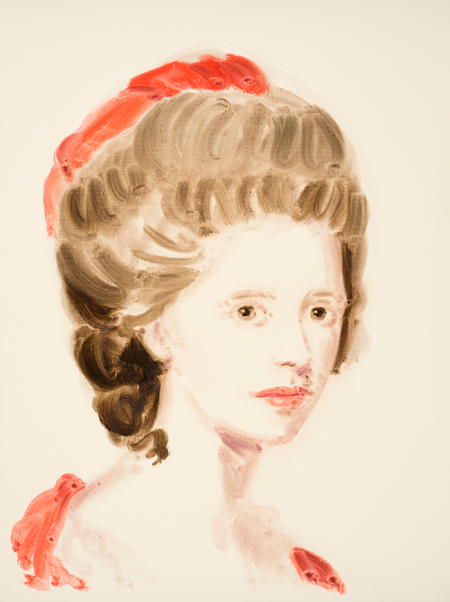Angelica Kauffman was one of the most original painters of the 18th century. So why have we not heard more about her? Artist Annie Kevans discusses

As a female artist who has been through art school and attended countless exhibitions, I was of the opinion that, for various reasons, it was impossible for women to be successful professional artists until the 20th century. I recently discovered that despite the massive obstacles faced by female artists in the past, many women did manage to have successful careers as early as the 16th century. This was a revelation to me.
Once part of art history, many of these women were gradually left out of subsequent studies – predominantly written by men – and their works were lost and forgotten. Having been rediscovered by later art historians, they still remain separate from art history, their work consistently left out of exhibitions and only deemed worthy of fields of study pertaining to female artists in particular.
I have chosen to paint artists who were as successful, and in some cases, more so than their male counterparts. While many of their male (and not particularly famous) equivalents who had equally successful careers feature in literature and museums about work of their era, female artists remain absent because they’re not deemed to be ‘important’. I believe this is because little is known and therefore written, about them.
“Kauffman entertained visitors from around the world. When she died in 1807, her funeral was on a par with Raphael’s”
One such artist is Angelica Kauffmann. Born in 1741, she was taught to paint by her father and was recognised as a child prodigy, carrying out commissions by the age of 15. Her father ended up leaving painting to manage his daughter’s finances. Kauffmann became successful as a history painter, seen as the most prestigious type of painting in the 18th century. It was also seen as unsuitable for women as it involved working with nude models. She received international acclaim, spoke several languages and was elected as a member of the prestigious Accademia di San Luca in Rome. Kauffmann moved to London in 1766 and quickly became one of the city’s leading artists. She was one of the founding members of the Royal Academy and was hailed as one of the most original painters of her time.
In 1767 she was duped into marrying a conman called Brandt who passed himself off as the Swedish Count de Horn. She was free to marry again upon his death in 1780 and married an Italian artist called Antonio Zucchi.The couple decided to move to Venice in 1781 where Kauffmann received commissions from an endless succession of princes, emperors, counts and dukes. Around this time, the artist turned down the position as Royal Painter to King Ferdinand and Queen Caroline of Naples.
Kauffmann then moved to Rome where she was undoubtedly the most successful and famous artist in the city. Banquets were held in her honour and she entertained visitors from around the world. When she died in 1807, her funeral was on a par with Raphael’s – her paintings were carried in a procession consisting of the Academicians of St Luke and many others from Italian, Portuguese and French academies.
Annie Kevans: Women and the History of Art runs at The Fine Art Society, 148 New Bond Street, London from 13 May to 6 June. More info HERE. Read more about Annie Kevans HERE




